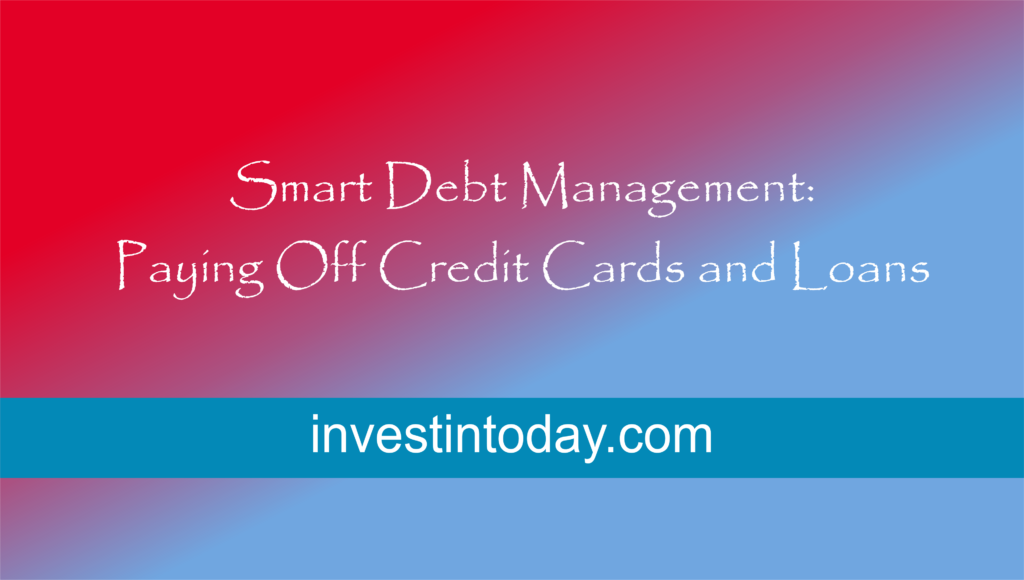Introduction
Debt . It’s like that one neighbor who borrows your stuff Management and never returns it. You thought it was a little favor, but presently it’s turning into a full-blown inconvenience. From credit cards to understudy advances, overseeing obligation can feel like climbing a never-ending slope, particularly if you keep rolling in reverse with each small rampage spend. In this article, I’ll share a few simple tips to offer assistance you bargain with obligation without losing your intellect (or your wallet).
And hello, possibly indeed have a small fun whereas you’re at it. Yes, obligation administration can be fun.
The to begin with step in handling obligation is recognizing it for what it is: an opportunity to recapture control over your funds and begin building more beneficial propensities. The more you center on how to take charge of your obligation, the less pushed you’ll feel approximately it. One successful procedure is making a budget. Don’t freeze! Budgeting doesn’t have to be a feared word. It’s basically a device to offer assistance you get it where your cash is going and how you can alter things to pay down your obligation.
Think of it like a outline for your money related travel. With a small arranging, you’ll be able to control clear of pointless costs and coordinate your reserves toward handling that developing heap of bills.
Another fun (yes, truly!) way to bargain with obligation is by getting imaginative with side hustles. Whether it’s outsourcing, puppy strolling, or offering things you no longer require, additional salary can go a long way in chipping absent at your obligation. Additionally, it feels fulfilling to see your endeavors decipher into more cash in your stash.
Fair be careful not to extend yourself as well lean with as well numerous side gigs, as you don’t need to burn out.
Lastly, don’t be perplexed to inquire for offer assistance if you require it. Obligation administration doesn’t have to be a forlorn street. There are various assets accessible, from budgetary advisors to online communities, where you can get exhortation, bolster, and inspiration. Now and then fair talking to somebody around your obligation circumstance can give clarity and unused experiences on how to approach it.
Managing obligation can feel overpowering at times, but it’s not the conclusion of the world. With persistence, assurance, and the right techniques, you’ll be able to thump out that obligation and move on to a more beneficial budgetary future. So, take a profound breath, put on your money-management cap, and let’s turn that irritating neighbor (obligation) into a thing of the past.

Step 1: Face the Music—Know What You Owe
The first step to fixing a problem is admit it that problem. That means gathering all your debts and seeing the full picture. Scary? Yes. Necessary? Absolutely.
- What to Do:
- Write down each debt, the balance, the interest rate, and the minimum payment.
- Maintain them from small to largest or by the highest interest rate.
Funny Thought: Think of it as a “debt family reunion.” They’re all here, from that tiny forgotten loan to the big, scary credit card bill. Time to break up with them one by one.
Step 2: Quit Adding Fuel to the Fire
It’s hard to put out a fire if you keep tossing in more logs, right? If you’re serious about paying off debt, you have to stop adding to it.
- Tips to Control Spending:
- Hide your credit cards. Yes, literally hide them in a drawer, a shoebox, or even the freezer.
- Remove saved cards from online shopping accounts (goodbye, late-night Amazon binges).
- Use cash for non-essential spending—it hurts more to hand over physical money.
Relatable Story: I once bought a “must-have” gadget online at 2 a.m., convinced it would change my life. Spoiler: it didn’t. It’s still in the box.
Step 3: Pick Your Debt-Busting Strategy
There are two main ways to tackle debt: the snowball method and the avalanche method. Neither involves actual snow, but both can help you chip away at your balances.
The Snowball Method
Focus on your smallest debt first, regardless of interest rate. Pay it off quickly, then move on to the next smallest.
- Why It Works: Small wins keep you motivated, like crossing things off a to-do list.
- Off-Topic Thought: Honestly, there’s nothing better than a good to-do list. Except maybe pizza.
The Advance Method
Target the pendings with the highest interest rate first. Once that’s gone, move on to the next.Why It’s Smarter: You save more money in the long run because you’re reducing interest faster.
Step 4: Negotiate Like a Boss
Did you know you can ask your creditors for better terms? Yep, it’s a thing. Lower interest rates, longer repayment periods—it never hurts to ask.
- What to Say:
- Be polite but firm. Explain your situation and ask if they can reduce your rate or offer a payment plan.
- If they say no, look into balance transfers or refinancing options.
Funny Anecdote: Negotiating with my credit card company felt like haggling at a flea market. Awkward, but hey, I got what I wanted.
Step 5: Budget Like a Grown-Up (Kind Of)
If budgeting sounds boring, think of it as a game: how much money can you save each month to attack your debt?
- How to Start:
- Track your spending for a month to see where your money goes.
- Cut back on things you don’t really need (yes, that includes takeout five nights a week).
Relatable Story: I once tried to budget without tracking my expenses. Turns out, “guessing” isn’t a great financial strategy. Who knew?
Step 6: Save for the Unexpected
Life like surprises, and not always the kind. A small emergency fund ($500–$1,000) can help you avoid adding more debt when things go sideways.
- Pro Tip: Start small—every little bit helps.
Funny Thought: It’s like a rainy day fund, but for when your car decides it’s tired of being a car.
Step 7: Celebrate Small Wins
Debt repayment can feel like a never-ending journey, so celebrate every milestone. Paid off a credit card? Treat yourself (responsibly).
- How to Celebrate:
- Go out for dinner (but don’t charge it).
- Splurge on something small, like a fancy coffee or a new book.
Random Thought: Rewards are way more satisfying when you know you earned them. It’s like a high-five from your future self.

Common Mistakes to Avoid
1. Paying Only the Minimum
If you’re only paying the minimum, you’re basically just covering interest and making no real progress.
- Pro Tip: Pay as much as you can above the minimum to chip away at the principal faster.
2. Forgetting to Track Progress Debt repayment is a marathon, not a sprint. Seeing how far you’ve come can keep you motivated, even when it feels like you’re barely moving.
Conclusion:
Debt might feel like a giant mountain, but with the right tools and mindset, you can climb it. Start by facing your numbers, choosing a strategy, and sticking to it. And don’t forget to celebrate along the way—because every little step gets you closer to financial freedom. Remember, it’s not about perfection; it’s about progress. So grab that notebook, hide those credit cards, and start taking control. Yourself in future will thank you.
